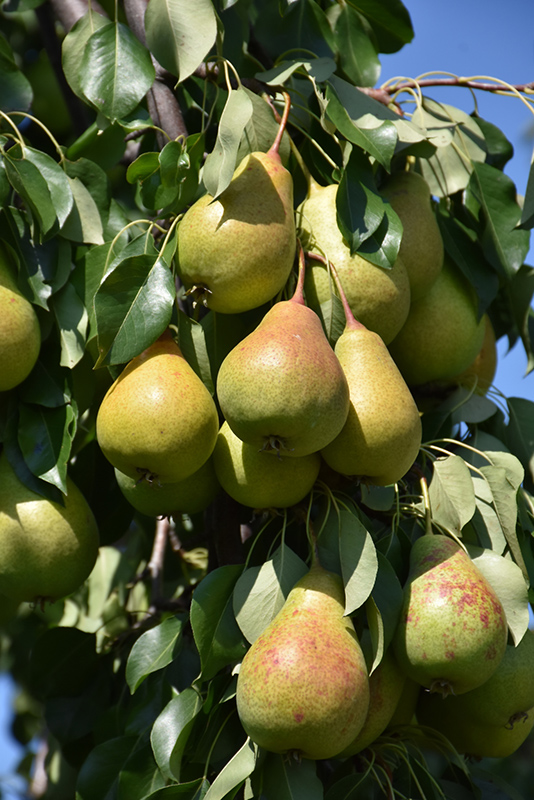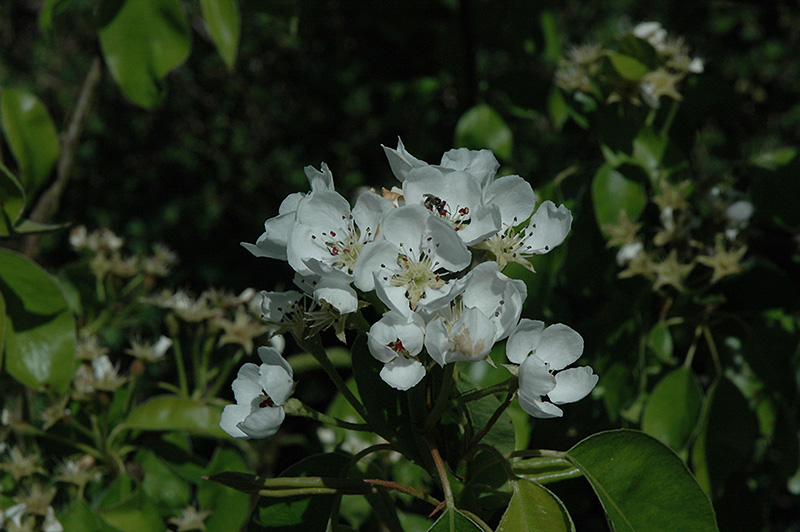Find Plants
Height: 45 feet
Spread: 30 feet
Sunlight:
![]()
Hardiness Zone: 5
Other Names: Common Pear
Description:
A popular fruit tree which produces long, firm light green pears with a tan blush; very showy white flowers in spring; tree height is dependent on rootstock used; needs a pollinator; can be susceptible to fireblight
Edible Qualities
Conference Pear is a large tree that is commonly grown for its edible qualities. It produces large light green long pears (which are botanically known as 'pomes') with a tan blush and white flesh which are usually ready for picking in early fall. The pears have a sweet taste and a firm texture.
The pears are most often used in the following ways:
- Fresh Eating
- Cooking
- Baking
Features & Attributes
Conference Pear is bathed in stunning clusters of white flowers along the branches in early spring. It has forest green deciduous foliage. The glossy pointy leaves turn an outstanding deep purple in the fall. The fruits are showy light green pears with a tan blush, which are carried in abundance in early fall. The fruit can be messy if allowed to drop on the lawn or walkways, and may require occasional clean-up.
This is a dense deciduous tree with a shapely oval form. Its average texture blends into the landscape, but can be balanced by one or two finer or coarser trees or shrubs for an effective composition. This is a high maintenance plant that will require regular care and upkeep, and is best pruned in late winter once the threat of extreme cold has passed. Gardeners should be aware of the following characteristic(s) that may warrant special consideration;
- Messy
- Disease
Aside from its primary use as an edible, Conference Pear is sutiable for the following landscape applications;
- Accent
- Shade
- Orchard/Edible Landscaping
Planting & Growing
Conference Pear will grow to be about 45 feet tall at maturity, with a spread of 30 feet. It has a low canopy with a typical clearance of 5 feet from the ground, and should not be planted underneath power lines. It grows at a fast rate, and under ideal conditions can be expected to live for 50 years or more. This variety requires a different selection of the same species growing nearby in order to set fruit.
This tree is typically grown in a designated area of the yard because of its mature size and spread. It should only be grown in full sunlight. It does best in average to evenly moist conditions, but will not tolerate standing water. It is not particular as to soil type or pH. It is highly tolerant of urban pollution and will even thrive in inner city environments. This is a selected variety of a species not originally from North America.
Disclaimer - This Plant Finder tool is an online resource representing many of the varieties that we carry over the course of the season, and is intended for informational purposes only. Inventory varies seasonally, so we cannot guarantee that every plant will be in stock at all times - please contact the store directly for availability. It does not include our entire inventory of plants, so be sure to visit our store to see varieties that may not be represented on this list.


